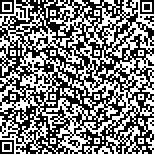| Quote
: |
朱文雄,袁轶峰,陈立蔓,张熙,刘涛,李博,陈其华.前癃通胶囊对前列腺增生大鼠前列腺组织TFF2、Wnt4、Wnt6的影响[J].湖南中医药大学学报英文版,2022,42(5):743-747.[Click to copy
] |
|
| |
|
|
| This paper
:Browser 2643times Download 1100times |
| 前癃通胶囊对前列腺增生大鼠前列腺组织TFF2、Wnt4、Wnt6的影响 |
| 朱文雄,袁轶峰,陈立蔓,张熙,刘涛,李博,陈其华 |
| (湖南中医药大学第一附属医院, 湖南 长沙 410007;湖南省第二人民医院, 湖南 长沙 410007) |
| 摘要: |
| 目的 观察前癃通胶囊对前列腺增生大鼠前列腺组织三叶因子2(trefoil factor 2, TFF2)、Wnt4、Wnt6的影响及其作用机制。方法 取12只大鼠作为空白对照组。另取60只大鼠行去势手术,术后随机均分为前癃通高、中、低剂量组和癃闭舒组、模型对照组,于术后第8天开始皮下注射丙酸睾酮,每次1 mg/300 g,1次/d,连续30 d,建立前列腺增生大鼠模型。造模的同时,进行灌胃干预,每次1 mL/100 g,1次/d,持续30 d。前癃通低、中、高剂量组前癃通药液56.25、112.5、225.0 mg/mL;癃闭舒组给予癃闭舒药液168.75 mg/mL;空白对照组、模型对照组给予蒸馏水。末次给药结束后24 h,比较各组体质量及前列腺湿质量、体积、指数;采用HE染色法观察前列腺组织;采用Western blot检测各组大鼠前列腺组织中TFF2、Wnt4、Wnt6蛋白表达情况。结果 空白对照组前列腺腔平滑圆润,上皮低柱状,管腔内见淡粉染均质状物,间质内几乎没有血管充血、炎性细胞浸润;模型对照组前列腺腔明显扩张,腺上皮呈高柱状,腔内充满粉色浓染均质状物,有明显的炎性细胞浸润;前癃通各剂量组和癃闭舒组前列腺组织病理改变较模型对照组有不同程度的改善,腔内均质状物颜色变浅,上皮低柱状,未见明显炎性细胞浸润。其中,前癃通高剂量组与癃闭舒组改善效果更为明显。模型对照组TFF2、Wnt4、Wnt6蛋白表达水平、前列腺湿质量、体积、指数均明显大于空白对照组(P<0.05,P<0.01)。前癃通中、高剂量组及癃闭舒组TFF2、Wnt4、Wnt6蛋白表达水平、前列腺湿质量、体积、指数均明显小于模型对照组(P<0.05,P<0.01)。前癃通低剂量组前列腺湿质量、体积、指数均明显大于癃闭舒组(P<0.05,P<0.01)。前癃通中、高剂量组Wnt4、Wnt6蛋白表达水平、前列腺湿质量、体积、指数及前癃通高剂量组TFF2蛋白表达水平均明显小于前癃通低剂量组(P<0.05,P<0.01)。前癃通高剂量组前列腺体积明显小于前癃通中剂量组、癃闭舒组(P<0.01)。前癃通中、高剂量组Wnt4、Wnt6蛋白及前癃通高剂量组TFF2蛋白表达水平均明显小于癃闭舒组(P<0.01)。前癃通高剂量组TFF2、Wnt4蛋白表达水平明显小于前癃通中剂量组(P<0.01)。结论 前癃通各剂量组在降低前列腺湿质量、减少前列腺体积与指数方面呈现出一定的正相关性量效关系。前癃通胶囊治疗前列腺增生疗效确切,其作用机制可能与干预TFF/Wnt信号通路,下调TFF2、Wnt4、Wnt6蛋白表达有关。 |
| 关键词: 前列腺增生 前癃通胶囊 Wnt 三叶因子2 Wnt4 Wnt6 |
| DOI:10.3969/j.issn.1674-070X.2022.05.009 |
| Received:July 27, 2021 |
| 基金项目:湖南省自然科学基金面上项目(2020JJ4484);湖南省教育厅科学研究项目(19C1429);湖南省中医药科研计划重点项目(2021001);湖南省技术创新引导计划临床医疗技术创新引导项目(2018SK50601)。 |
|
| Effect of Qianlongtong Capsule on TFF2, Wnt4 and Wnt6 in prostate tissue of rats with prostatic hyperplasia |
| ZHU Wenxiong,YUAN Yifeng,CHEN Liman,ZHANG Xi,LIU Tao,LI Bo,CHEN Qihua |
| (The First Affiliated Hospital of Hunan University of Chinese Medicine, Changsha, Hunan 410007, China;The Second People's Hospital of Hunan Province, Changsha, Hunan 410007, China) |
| Abstract: |
| Objective To observe the effect of Qianlongtong Capsule on trefoil factor 2 (TFF2), Wnt4, Wnt6 in prostate tissue of rats with prostatic hyperplasia and its mechanism. Methods 20 rats were used as blank control group. 60 rats were selected for castration surgery. After surgery, they were randomly divided equally into Qianlongtong high-dose, medium-dose, and low-dose group, Longbishu group, and model control group. The rat model of prostatic hyperplasia was established by subcutaneous injection of testosterone propionate at 1 mg/300 g once a day for 30 consecutive days on the 8th postoperative day. At the same time of modeling, gavage intervention was performed, 1 mL/100 g each time, once a day, for 30 d. Blank control group and model control group were given distilled water. Qianlongtong low-dose, middle-dose, and high-dose groups were given the Qianlongtong drug liquid 56.25, 112.5, 225.0 mg/mL. Longbishu group was given Longbishu drug liquid 168.75 mg/mL. 24 h after the last administration, body weight, wet weight, volume and index of prostate were compared among all groups. Prostate tissue was observed by HE staining. The protein expression levels of TFF2, Wnt4 and Wnt6 in prostate tissues were detected by Western blot. Results In the blank control group, the prostate lumen was smooth and round, the epithelium was low columnar, and there was light powder stained homogeneous substance in the lumen, and there was almost no vascular congestion and inflammatory cell infiltration in the interstitium. In the model control group, the prostate lumen was obviously dilated, and the glandular epithelium was tall columnar, and the lumen was full of pink stained homogeneous material, with obvious inflammatory cell infiltration. Compared with model control group, the pathological changes of prostate tissue in the Qianlongtong each dose group and Longbishu group were improved in varying degrees. The homogenous luminal structures became pale in color, the epithelium was low columnar, and no obvious inflammatory cell infiltration was observed. Among them, the Qianlongtong high-dose group and Longbishu group had more obvious improvement. Compared with blank control group, the protein expression levels of TFF2, Wnt4 and Wnt6 and wet weight, volume and index of prostate in model control group increased (P<0.05, P<0.01). Compared with model control group, the protein expression levels of TFF2, Wnt4 and Wnt6 and wet weight, volume and index of prostate in Qianlongtong middle-dose, and high-dose groups and Longbishu group decreased (P<0.05, P<0.01). Compared with Longbishu group, the wet weight, volume and index of prostate in Qianlongtong low-dose group increased (P<0.05, P<0.01). Compared with Qianlongtong low-dose group, the protein expression levels of Wnt4 and Wnt6 and wet weight, volume and index of prostate in Qianlongtong middle-dose and high-dose groups, as well as the protein expression level of TFF2 in Qianlongtong high-dose group decreased (P<0.05, P<0.01). Compared with Qianlongtong middle-dose group and Longbishu group, volume of prostate in Qianlongtong high-dose group decreased (P<0.01). Compared with Longbishu group, the protein expression levels of Wnt4 and Wnt6 in Qianlongtong middle-dose and high-dose groups and the protein expression level of TFF2 in Qianlongtong high-dose group decreased (P<0.01). Compared with Qianlongtong middle-dose group, the protein expression levels of TFF2 and Wnt4 in Qianlongtong high-dose group decreased (P<0.01). Conclusion Qianlongtong each dose group showed a certain positive correlation in reducing wet weight, volume and index of prostate. Qianlongtong Capsule is effective in treating prostatic hyperplasia, and its mechanism may be related to interfering TFF/Wnt signaling pathway and down-regulating TFF2, Wnt4 and Wnt6 protein expression. |
| Key words: prostatic hyperplasia Qianlongtong Capsule Wnt trefoil factor 2 Wnt4 Wnt6 |
|

二维码(扫一下试试看!) |
|
|
|
|


